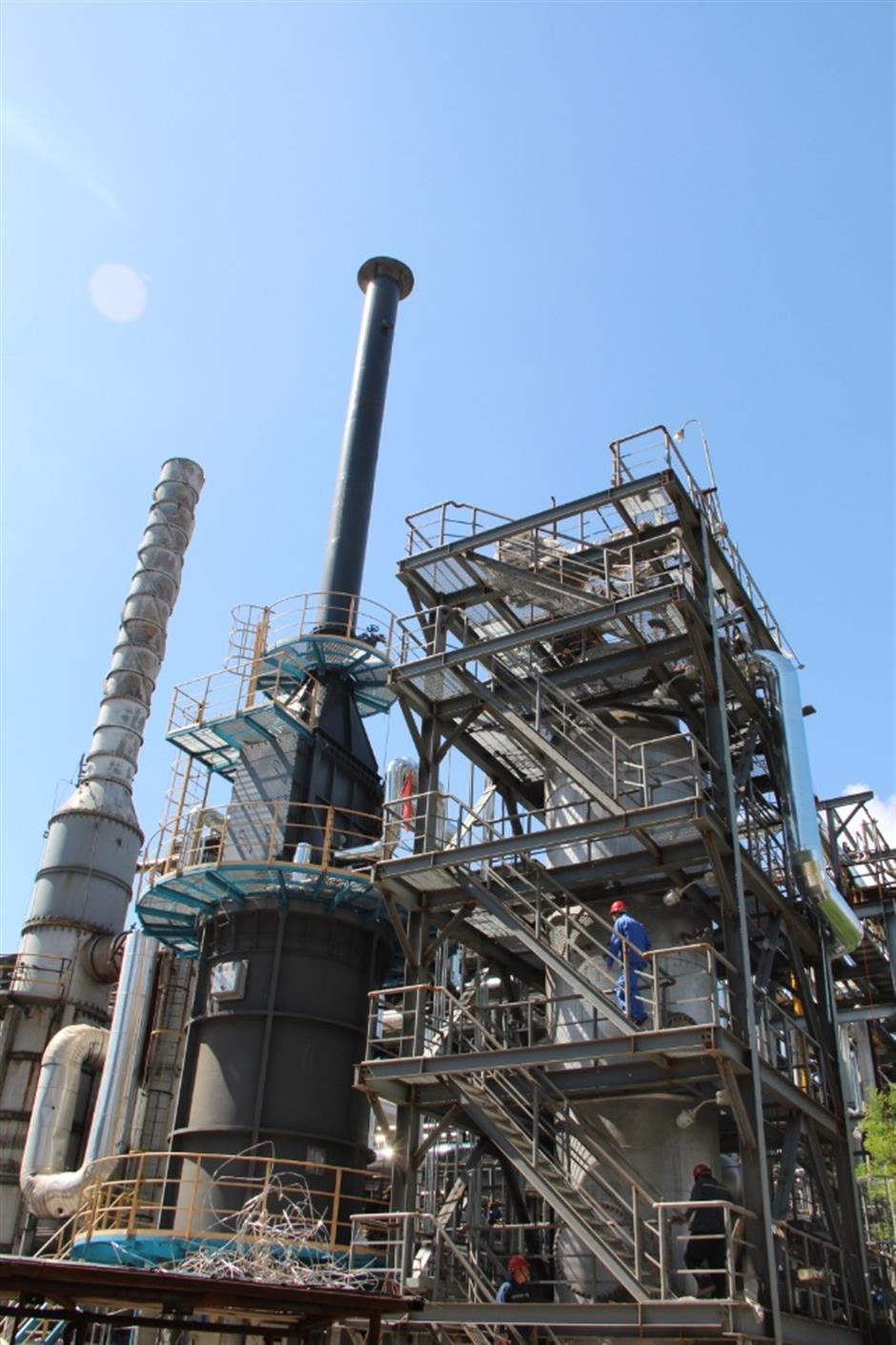Converting greenhouse gas to value-added syngas takes a big step forward

The demonstration plant located in Shanxi Province.
The world's largest production plant to produce value-added synthesis gas — known as syngas — has passed an industrial demonstration with flying colors.
Syngas is made from methane and carbon dioxide, two main greenhouse gases.
The successful industrial demonstration expanded the “dry reforming” technology's to an almost commercial scale and paves the way for its future commercialization, said the developer, Shanghai Advanced Research Institute of Chinese Academy of Sciences, on Sunday.
Carbon dioxide and methane are key carbon resources, local researchers said. Converting the greenhouse gases to syngas of carbon monoxide and hydrogen, known as "drying reforming of methane," is receiving increasing attention, the researchers said.
This is not only because the value-added syngas is a key raw material for a wide range of chemical products and fuels, but also because of its "great incentives" in environment protection.
"Compared with traditional steam reforming, the dry reforming almost does not consume water, but uses the greenhouse gases," said Dr Zhang Jun, a leading researcher of the project. "It can converse resources and contribute to ease the increasing pressure on greenhouse emission."
However, two of the biggest challenges to apply the dry reforming at an industrial scale lie in the catalyst that can resist severe carbon deposition and its special reactor.
The bottlenecks restricted the novel technology in in the laboratory. The issues were resolved by the research team of the institute, particularly through the development of a "highly stable nanocomposite catalyst."
“With the development, the technology can be applied on offshore natural gas, shale gas that contains large amount of carbon dioxide, as well as in traditional coal chemical industry,” said Zhang.
The demonstration plant, which is sited in north China’s Shanxi Province, can produce more than 200,000 normal cubic meters of the syngas and convert 60 tons of carbon dioxide daily.
As of Sunday, it had been operating "stably" for more than 1,000 hours. Shanxi is China’s main coal producer.
The technology demonstration project was co-launched by the scientific institute, Shanxi Lu’an Coal Corporation Limited and Shell Global Solutions International. The three parties plan to promote technology’s commercialization worldwide.















